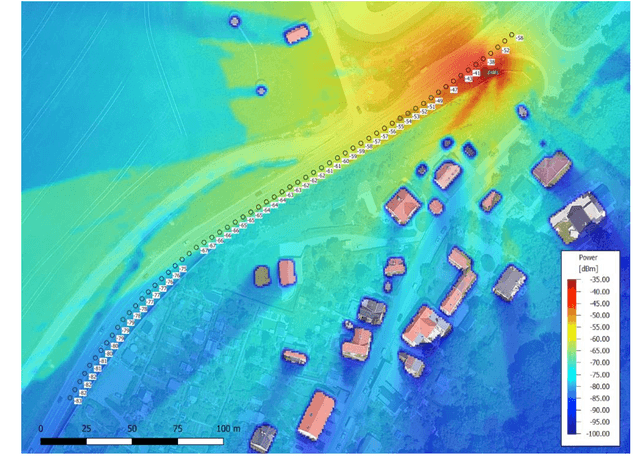Efficient coverage planning for full-area C-ITS communications based on radio propagation simulation and measurement tools
Paper and Code
Feb 07, 2022



Intelligent infrastructure, currently often consisting of C-ITS stations and prospectively supplemented by 5G, is a key-enabler for application-oriented and area-wide realization of highly automated and connected driving. For this, radio coverage along the routes must be ensured, leading to high demands on location- and radio-specific planning and parameterization of roadside units (RSU). Hence, this paper presents efficient planning, measurement and evaluation methods for RSU coverage outlining, allowing economically efficient and technically secured planning of intelligent infrastructure. Necessary scientific technical steps are showcased along a 3.5 km testbed for automated and connected driving in rural environments. First, a radio propagation simulation based on a 3D environment model and its electro-magnetic properties is performed, allowing the examination and optimization of RSU quantity as well as site and antenna selection. Additionally, the necessary calibration of simulation results based on continuous wave (CW) and C-ITS service measurements in both lab-based and real-world scenarios is presented.
 Add to Chrome
Add to Chrome Add to Firefox
Add to Firefox Add to Edge
Add to Edge